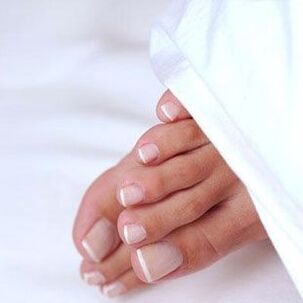
Summer gives us wonderful opportunities for relaxation and beauty. After all, when, if not in summer, can we afford a fashion show in beautiful open shoes to demonstrate our flawless pedicure and beautiful legs to others? And how much joy it gives us to walk barefoot on the warm, soft sand!
Unfortunately, all these summer charms can end rather sadly for our feet and nails, because if we open them we risk contracting such an unpleasant and extremely insidious disease as a fungus. And most commonly, our nails and feet are affected. In addition, you can get infected with nail fungus not only on the beach or in a public shower.
You can get this disease even on public transport or just walk down the street in open shoes: slippers or sandals.
Unfortunately, the consequences of a fungal infection for the nails and the human body as a whole are quite serious, so you should not start this disease.
Therefore, it is important to know the symptoms of infection and start treatment in a timely manner. And to do that, you need to figure out what constitutes toenail fungus.
What is onychomycosis
Fungi are a class of lower plants that form filaments of mycelium and spores. With the help of spores, fungi multiply and also spread to the external environment. You may be surprised, but scientists know more than 300, 000 species of fungi, and about 100 species of them can cause skin and nail diseases in humans.
Since they also reproduce by spores, any tiny crumb of a diseased nail or a tiny patch of skin from a diseased person's heel or foot is enough to become infected with such fungi.
Fungal infections of the nails (onychomycosis) can be caused by different types of fungi. Accordingly, the signs of infection will be different, and so will the means of getting rid of them.
dermatophytes
If you notice small yellow spots or streaks appearing on your toenails, streaks of a lighter shade of white or gray appearing on your fingernails, and the edge of the nail is moving away and turning yellow - most likely you have contracted dermatophytes.
The degree of infestation with dermatophytes is easy to determine from the same streaks and spots: the lighter they are and the closer to the center of the nail they are, the more severe the infestation. So, if these streaks and spots are closer to the edges of the nails, then the infection has not progressed too far and the disease can be stopped in time. But don't hesitate! Because if left untreated, not only the toenails are affected, but also the skin around them, and the nail plate eventually turns completely yellow and opaque.
yeast fungi
When the toenails become uneven, grooves and "waves" appear on them, if at the same time the nail gradually turns yellow and loses density, becomes very brittle and thin, lagging behind the nail bed - most likely you have become infected with yeast. In this casethe degree of infection is determined by the color of the nail: the more yellow and even brownish it became, the further the lesion progressed.
Destruction of toenails with yeast most often begins with a slight thickening of the nail folds, which eventually become swollen and red. Pressing on those inflamed reels is quite painful. Later, pus may appear in it, which in contact with the skin can cause additional infection. If no measures are taken, over time the nail can gradually bend and change color, shallow brown grooves appear.
to shape
If a person's nails, like his whole body, were weakened for a long time by a long illness, and then quickly changed color, becoming yellow, blue, green, brown or black, or dark or even black spots or spots appeared on the nails- most likely there was an infection with mold.
Such an infection, fortunately, does not penetrate very deeply into the structure of the nail plate itself and, compared to the above types of fungi, is treated quite quickly: one to two months.
consequences of the disease
However, all these are only external signs of the disease, and if no measures are taken, toenail fungus can spread throughout the body, especially if it is dermatophytes or molds. Over the course of a year, and sometimes several years, the fungus slowly destroys the nail plate, filling the entire nail and invading the nail bed, and after a while it spreads from the feet to the hands, first affecting the thumbs, andthen everyone else.
The fungus, spreading and taking root in the human body, significantly weakens the immune system, thereby contributing to the occurrence of various allergic reactions and the aggravation of chronic diseases.
If a person does not start treatment at this stage, internal organs will be damaged. People who have a bad habit of biting their nails are particularly susceptible to such an infection.
Therefore, it is extremely important to identify the disease in time and initiate timely and adequate treatment. Of course, it can only be prescribed by a specialist who will conduct the necessary examination and prescribe the appropriate drugs that will affect exactly the fungus that affects your body.
self diagnosis
You can try to diagnose your own nail fungus yourself if you suspect something is wrong with its appearance, you experience itchy and dry skin.
To do this, you need the most common potassium permanganate. You need to make it into a watery solution and sink your legs into it. After a few minutes, your nails will turn brown, but the fungal lesions will remain light-colored.
In this case, you definitely cannot do without a visit to the doctor. And it's better not to delay it!


















